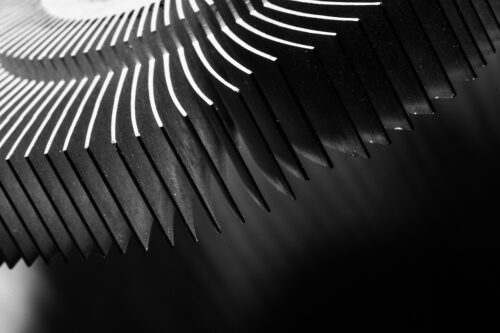How to Dye Black Metal in 6 Steps
Dying anodized aluminum black may seem complicated, but it doesn’t have to be. With the right materials, you can transform dull gray metal into rich, deep black without much effort on your end.

Before you dive in headfirst, it is essential to learn how to dye black metal with anodizing dyes. Understanding how the process works will ensure you get a high-quality finished product every single time.
What is Anodizing?
Anodizing makes the outer surface of aluminum stronger and prevents oxidation. It changes the surface chemistry of metals and other substrates in a way that protects against corrosion, enhances the overall aesthetics, and makes it scratch-resistant. Since anodizing produces one of the most durable surface finishes available, it is often used on various metal types.
How to Dye Black Metal With Anodizing
There are several ways you can dye metal black, but the process is fairly straightforward when it comes to anodizing. For the purposes of this article, we’ll walk through the steps on how to dye aluminum metal black. Be sure to follow the steps closely for a quality finished product that is rich, brilliant, and impressive.
Step 1: Thoroughly clean the piece of aluminum you want to anodize. Don’t speed through this step as you want to make sure the metal is as clean as possible. Use dishwashing liquid and water to speed up the process. Degrease the aluminum using a degreasing cleaner.
Step 2: Once the aluminum is clean, use a tub filled with some type of electrolytic solution like sulfuric acid to soak your metal.
Step 3: Attach the negative cathode from the power supply to an aluminum plate. Submerge the plate in the sulfuric acid solution. Then, connect the positive cathode from the power supply to an aluminum piece you want to anodize.
Step 4: Turn on the power supply to 12 volts DC at two amps. Once bubbles form, you know that the current is flowing. When the bubbles disappear, remove your aluminum piece.
Step 5: Mix your black anodizing dye with distilled water per manufacturer instructions. Submerge your piece for at least 15 minutes. Sometimes, heating the dye solution can help the dye to adhere better, so read all instructions.
Step 6: Remove your finished piece and seal the surface or use finishing additives to maintain its rich color and smooth surface.
You can repeat this process with any of the rich, vibrant anodizing dye colors from Kingscote Chemicals.
